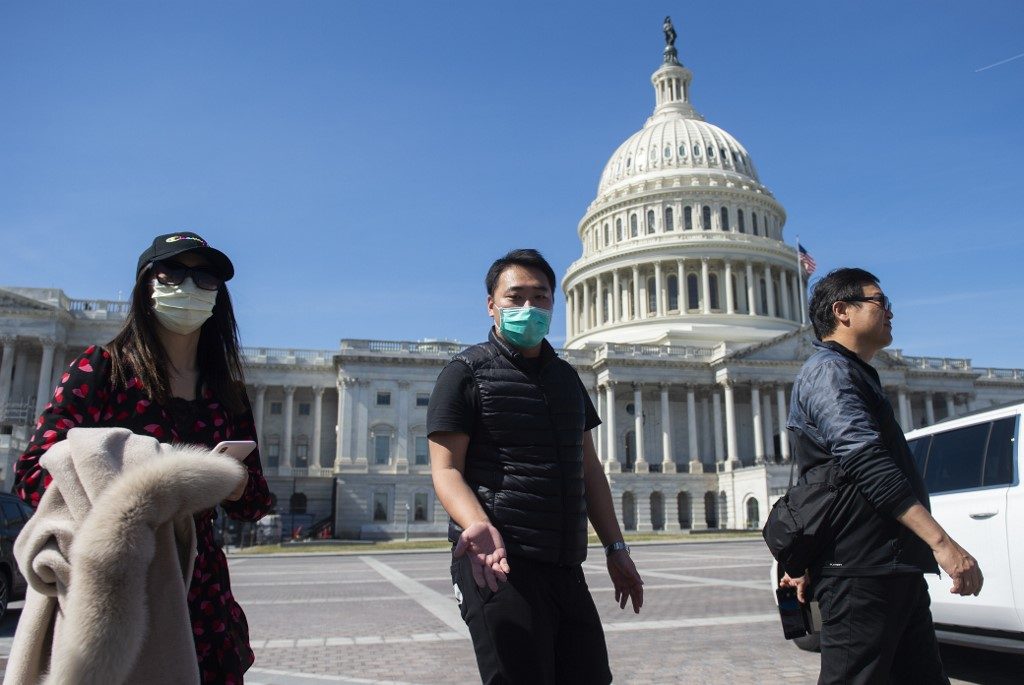SUMMARY
This is AI generated summarization, which may have errors. For context, always refer to the full article.

WASHINGTON, USA – The number of US cases of the novel coronavirus surged to more than 900 on Tuesday, March 10, according to an AFP tally, after public health experts criticized authorities for downplaying the epidemic and lagging behind in testing efforts.
At least 28 people have died and some 910 people have been infected, according to a state-by-state count, a significant jump of some 550 cases the day before. (READ: Global virus toll tops 4,000 – AFP tally)
The rise is linked to an expansion in testing as the bulk of diagnoses have shifted from federal to state laboratories.
Epidemiologists have said faulty test kits coupled with a diagnostic strategy that initially targeted too few people allowed the disease to spread beyond US authorities’ ability to detect it.
Writing in the Journal of the American Medical Association (JAMA) on Monday, March 9, academics from Johns Hopkins University and Stanford University said the failings had contributed to the virus taking root across the country.
Speaking at a White House briefing, Vice President Mike Pence defended the federal government’s response and said that “a million tests are in the field.” He added that more would be added as the government partnered with private companies.
According to the latest CDC figures, 8,554 tests had been performed as of Monday. (READ: 2 U.S. lawmakers exposed to coronavirus before meeting Trump)
By way of comparison, South Korea, which announced its first case on the same day as the US, has tested more than 189,000 people, according to a report in the Business Insider.
The authors of the JAMA report wrote that the only test initially authorized was one developed by the CDC.
It relied on the same technology as one authorized by the World Health Organization (WHO) and deployed around the world – except that a fault meant the CDC kit was returning inconclusive results.
It was not until February 29, the date of the first US death and more than a month after the first confirmed US case, that the Food and Drug Administration lifted a ban on state laboratories developing their own kits based on the WHO’s tests.
‘Don’t overcorrect’
“Adopting broader testing criteria and allowing use of a wider range of tests would have been helpful in identifying the first US cases and containing the spread,” said Michelle Mello of Stanford, a co-author of the JAMA report.
“Manufacturing problems like the one that arose with CDC’s test are always a risk, but the fact that CDC put all its eggs in that one basket made the manufacturing snafu highly consequential,” she wrote on her university’s blog page.
The CDC was initially only testing people with known exposure, meaning a Californian patient on a ventilator was denied the test for 5 days, the patient’s doctors said. The criteria were changed as a result of this case.
Mello also pointed to several inaccuracies in White House communications on the epidemic – from declaring that containment efforts were “close to airtight” to claiming a vaccine could be ready within 3 to 4 months.
“The public messaging from Washington about the seriousness of the problem has been neither consistent nor accurate, and I worry it may have led Americans to take fewer steps to prevent community transmission than we should have,” she said.
The authors argued against overcorrection, however, saying that health services would be quickly overwhelmed if everyone with a cough or fever – or exposure to sick patients – demanded a test. – Rappler.com
Add a comment
How does this make you feel?
There are no comments yet. Add your comment to start the conversation.